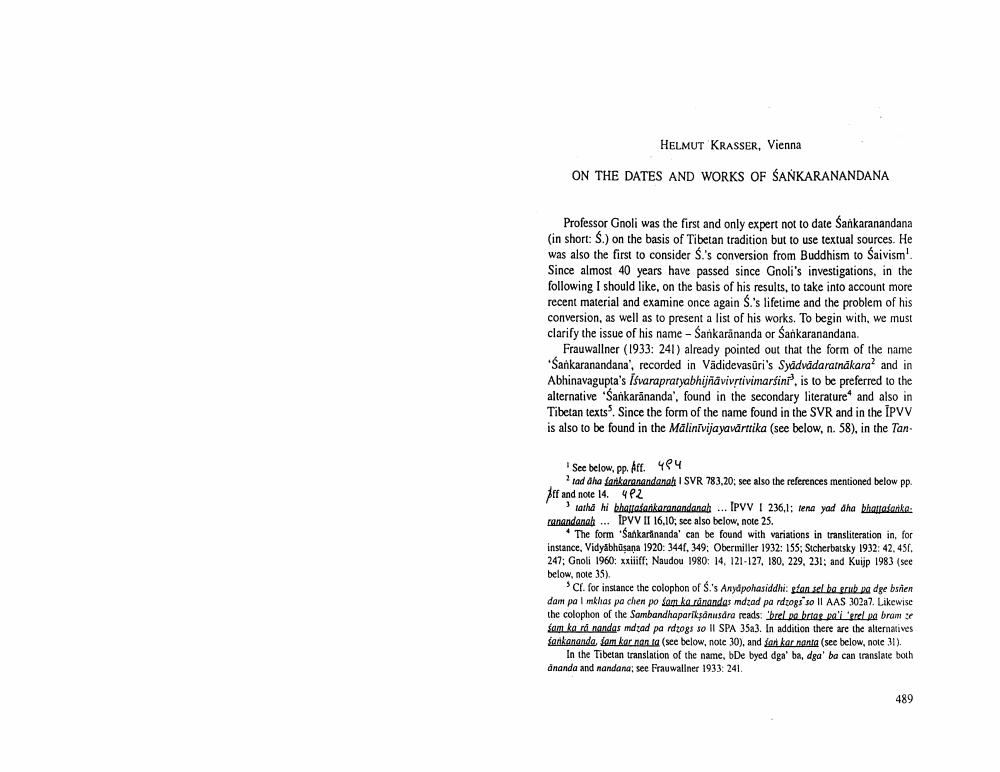________________
HELMUT KRASSER, Vienna
ON THE DATES AND WORKS OF SANKARANANDANA
Professor Gnoli was the first and only expert not to date Sankaranandana (in short: S.) on the basis of Tibetan tradition but to use textual sources. He was also the first to consider S.'s conversion from Buddhism to Saivism'. Since almost 40 years have passed since Gnoli's investigations, in the following I should like, on the basis of his results, to take into account more recent material and examine once again S.'s lifetime and the problem of his conversion, as well as to present a list of his works. To begin with, we must clarify the issue of his name - Sankarananda or Sankaranandana.
Frauwallner (1933: 241) already pointed out that the form of the name Sankaranandana', recorded in Vadidevasūri's Syadvádaratnakara? and in Abhinavagupta's Isvarapratyabhijñāvivrtivimarsini', is to be preferred to the alternative 'Sankarananda', found in the secondary literature and also in Tibetan texts. Since the form of the name found in the SVR and in the IPVV is also to be found in the Malinivijayavārtika (see below, n. 58), in the Tan
See below, pp. Afr. 484
rad dha Sankaranandangh I SVR 783.20 see also the references mentioned below pp. Pff and note 14.482
natha hi bhattafankaranandanah ... IPVV I 236,1; tena yad dha bhattacante: menandanah ... IPVV II 16,10, see also below, note 25.
The form Sankartinanda' can be found with variations in transliteration in for instance, Vidyabhūsana 1920: 344, 349: Obermiller 1932: 155: Stcherbatsky 1932: 42.456. 247: Gnoli 1960: xxiiiff: Naudou 1980: 14. 121-127, 180, 229, 231: and Kuijp 1983 (see below, note 35).
CI. for instance the colophon of S.'s Anydpohasiddhi: gian scl be grub.gadge brien dam palmkhas pe chen po som ka rånandas mdzad pa rdzogs soll AAS 302a7. Likewise the colophon of the Sambandhapariksanusara reads: "brel brtar ba'i 'erel ug bram som kan nandas marad pa rdrogs so II SPA 35a3. In addition there are the alternatives Sarkananda Sam kar nanta (see below, note 30), and San kar nanta (see below, note 31).
In the Tibetan translation of the name, bDe byed dga' ba, dga' ba can translate both ananda and nandana: see Frauwallner 1933: 241.
489




